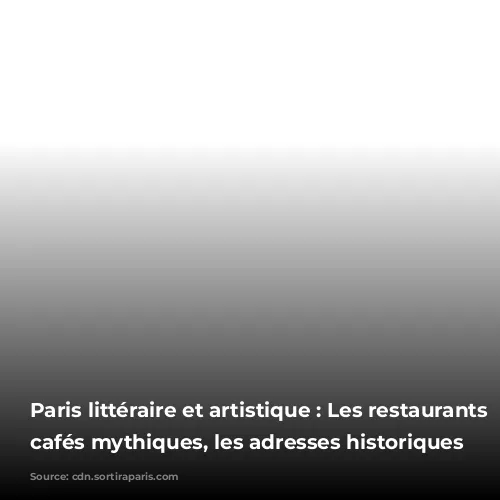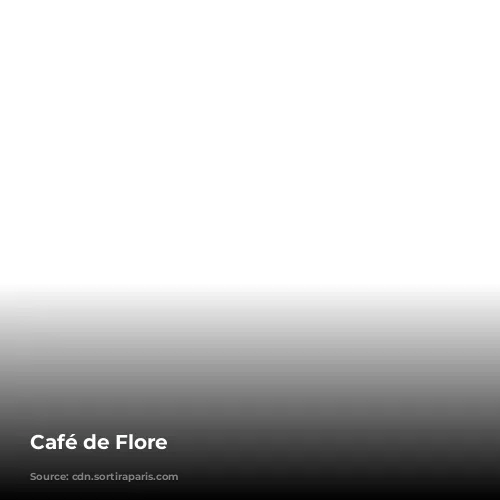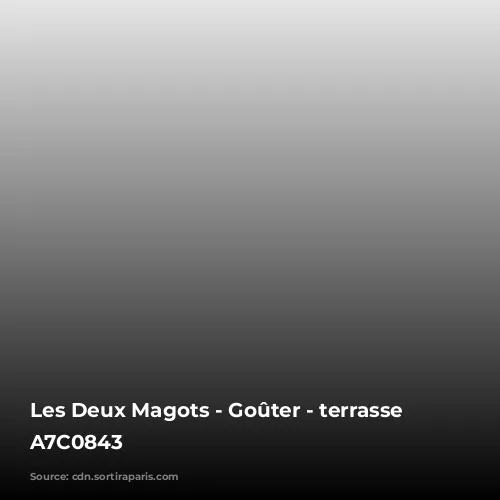Imagine yourself strolling through the cobblestone streets of Paris, the scent of freshly baked bread wafting in the air. You catch a glimpse of a charming café, its tables filled with lively conversations and laughter. This is not just any café; it’s a piece of history, a place where artists, writers, and intellectuals once gathered to create, debate, and simply enjoy life.
Paris, the City of Lights, has long been a magnet for creative minds from around the world. Throughout history, these individuals have frequented the city’s many cafés, restaurants, and bistros, transforming them into vibrant hubs of artistic expression and intellectual exchange. From the Left Bank to the heart of the city, these establishments have witnessed countless moments of inspiration, collaboration, and revolution.

A Journey Through Time: From the Enlightenment to the Modern Era
Step into the world of Parisian literary legends by venturing into the hallowed halls of the Café de Flore. This iconic establishment, inaugurated in 1885, became a haven for some of France’s most celebrated writers. Jean-Paul Sartre and Simone de Beauvoir, the iconic philosophers and writers, made the Café de Flore their second home, spending hours writing, discussing ideas, and observing the world around them. This tradition of intellectual exchange continued with other literary giants, including Albert Camus, Guillaume Apollinaire, Louis Aragon, and Jean Cocteau.
Le Procope, founded in 1686, is considered one of the oldest café-restaurants in Paris. This historical gem has witnessed the rise and fall of empires and the evolution of artistic movements. The establishment was a favorite of the Enlightenment thinkers, with luminaries such as Voltaire, Jean-Jacques Rousseau, and Denis Diderot frequenting its tables. In later years, Le Procope attracted a new generation of literary giants, including Paul Verlaine, Victor Hugo, Honoré de Balzac, and Alfred de Musset.
Le Select, established in 1923, quickly became a favorite haunt of artists and bohemians. During its golden age between the World Wars, Pablo Picasso, F. Scott Fitzgerald, and Ernest Hemingway were regulars at this brasserie. It was also a haven for the LGBTQ+ community, with actors like Jean Marais, Suzy Solidor, and Serge Lifar.
La Rotonde, another celebrated Montparnasse institution, thrived between the wars. This vibrant space attracted a diverse crowd of artists, writers, and intellectuals. Pablo Picasso, Amedeo Modigliani, Blaise Cendrars, and the Surrealist movement were regulars here, alongside expatriates like Henri Miller, Francis Scott Fitzgerald, and, of course, Hemingway. While now popular with tourists, La Rotonde continues to embody the spirit of artistic revolution.
Just a stone’s throw from the Opéra Garnier lies the elegant Café de la Paix, with its striking Napoleon III-style architecture. Inaugurated in 1862, this café attracted a who’s who of Parisian society, including Émile Zola, Guy de Maupassant, Marcel Proust, Pyotr Ilyich Tchaikovsky, André Gide, and, inevitably, Hemingway. The Café de la Paix was one of the few Parisian hotspots outside the Left Bank that embraced the artistic scene. It even hosted early film screenings in 1896, showcasing the dawn of a new era in entertainment.
La Coupole, opened in 1927, quickly became the place to be in Montparnasse, attracting a glamorous crowd with its stunning Art Deco décor. Jean Cocteau, Joséphine Baker, Brassaï, Edith Piaf, and international stars like Ava Gardner, Hemingway, and Marlene Dietrich were among its regulars. The following year, the establishment added a basement dance hall, offering revelers a place to dance the night away to rumba, bolero, guaracha, and samba.
La Closerie des Lilas, initially a coaching inn, was renamed in 1883. This establishment, initially a favorite of Impressionists like Pierre-Auguste Renoir, Claude Monet, and Camille Pissarro, along with writers like Charles Baudelaire and Edmond and Jules de Goncourt, later attracted a new generation of literary and artistic giants. Paul Verlaine, Vladimir Lenin, F. Scott Fitzgerald, Hemingway, Oscar Wilde, and Samuel Beckett all graced its tables, making it a true melting pot of creativity.

From the Bohemian Heart of Montparnasse to the Lost Gems of Paris
The Café du Dôme, established in the late 19th century, became a popular meeting place for French and Anglo-Saxon intellectuals, especially American artists. The “Dômiers,” as the artists who frequented the café were known, included Robert Capa, Henri Cartier-Bresson, Tsuguharu Foujita, Paul Gauguin, Anaïs Nin, and Chaim Soutine. While now an upscale fish restaurant, the Dôme was once a vibrant center of artistic expression in Montparnasse.
The Café du Rat Mort, originally called Café Pigalle, was given its infamous name due to a persistent smell of decay, reminiscent of a dead rat. Despite the pungent aroma, the café attracted a diverse clientele, including Alphonse Daudet, Gustave Courbet, Henri de Toulouse-Lautrec, Virginia Woolf, and Edgar Degas. The café even witnessed the first arguments between Paul Verlaine and Arthur Rimbaud, two prominent poets of the time.
The Café Riche, mentioned in the works of Honoré de Balzac, Émile Zola, and Guy de Maupassant, was a luxurious establishment renowned for its exquisite food, fine wines, and high prices. The café was a popular destination for the elite of Parisian society, attracting luminaries like Gustave Flaubert, Alexandre Dumas, Jacques Offenbach, and Gustave Doré. The Café Riche closed its doors in 1916, making way for a bank, leaving behind a legacy of elegance and refinement.
The Café Tortoni de Paris was a renowned institution in the 19th century, with its luxurious Venetian-style décor. This popular spot attracted politicians, intellectuals, socialites, and financiers, with the Stock Exchange being located just a stone’s throw away. Stendhal, Guy de Maupassant, Marcel Proust, Édouard Manet, and George Sand were among its most notable patrons. However, the café closed its doors in 1893, leaving behind a rich tapestry of history and literary inspiration.
The Dingo American Bar and Restaurant, established in 1923, was a favorite haunt for English-speaking artists and writers in the 1920s and 1930s. Hemingway, Scott Fitzgerald, Man Ray, and Isadora Duncan were regulars at this establishment, which was one of the few places in Paris that remained open all night. The Dingo American Bar and Restaurant is now an Italian restaurant, but its legacy as a meeting place for creative minds lives on.
These are just a few of the countless legendary cafés, restaurants, and bistros that have shaped the cultural landscape of Paris. From the intellectual debates of the Café de Flore to the bohemian spirit of La Rotonde, these places have witnessed the birth of artistic movements, the forging of friendships, and the creation of timeless works. A visit to these historical establishments is an opportunity to step back in time and experience the magic of Paris, a city where creativity and culture have always flourished.





















































